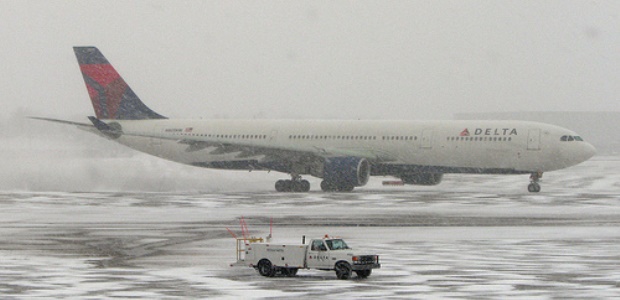
FAA Sets New Icing Standards for New Transport Aircraft
"While flying is already incredibly safe, I want passengers to know that we're setting even higher standards for new airplanes so they can fly safely in icing conditions," U.S. Transportation Secretary Anthony Foxx said.
The Federal Aviation Administration issued a final rule this week expanding the coverage of its icing certification standards. The revised standards require U.S. manufacturers to show that transport airplanes can operate safely in freezing drizzle or freezing rain, the icing environment known as "supercooled large drops," or SLD. The standard also includes ice crystal weather conditions.
FAA's announcement of the rule said "SLD is less common than standard small droplet icing and can form ice on the airplane that exceeds the capability of current ice protection systems. The SLD could also severely impact the airplane's performance and handling characteristics. Pilots usually encounter ice crystals, which can clog external air data sensors or lead to ice buildup in an engine, while they are flying around thunderstorms."
"While flying is already incredibly safe, I want passengers to know that we're setting even higher standards for new airplanes so they can fly safely in icing conditions," said U.S. Transportation Secretary Anthony Foxx.
The final rule follows a proposed rule that FAA issued in June 2010 and is based on recommendations from FAA's Aviation Rulemaking Advisory Committee and the National Transportation Safety Board. The rule also is based on extensive research and flight testing. When effective within 60 days, it will require certain new transport category aircraft that are most affected by SLD icing conditions to meet updated safety standards, and it adds requirements for airplane performance and handling qualities in SLD conditions for aircraft that have a takeoff weight of less than 60,000 pounds or have reversible flight controls – a direct mechanical link from the control lever to the flight control surface, unlike hydraulic power. FAA is also mandating changes in the icing certification requirements for engines, engine installations, and some airplane systems on all transport airplanes, such as angle of attack and airspeed indicating systems. These systems must be able to perform in freezing rain, freezing drizzle, mixed phase, and ice crystal conditions.
"This rule assures that our future U.S. fleet will be able to safely withstand unexpected encounters with icing conditions," FAA Administrator Michael Huerta said.